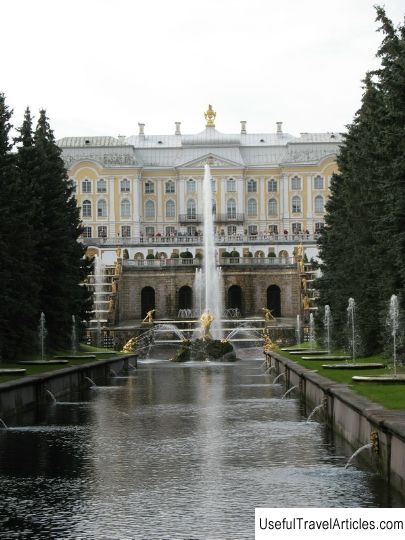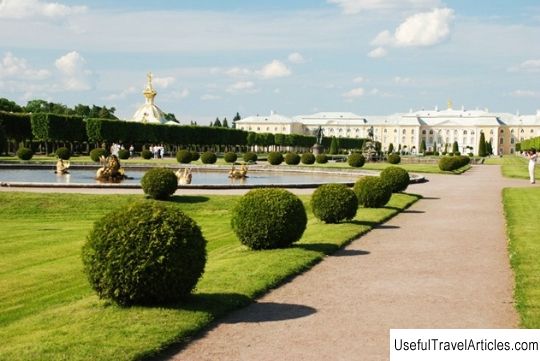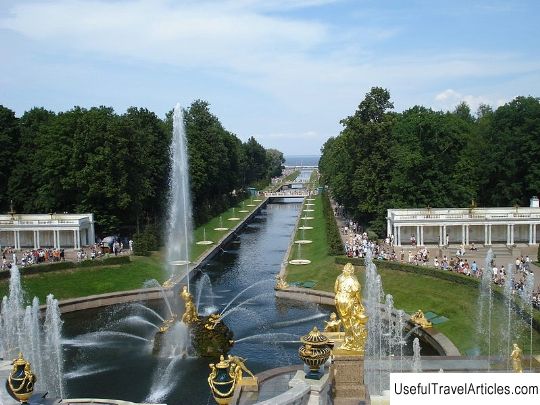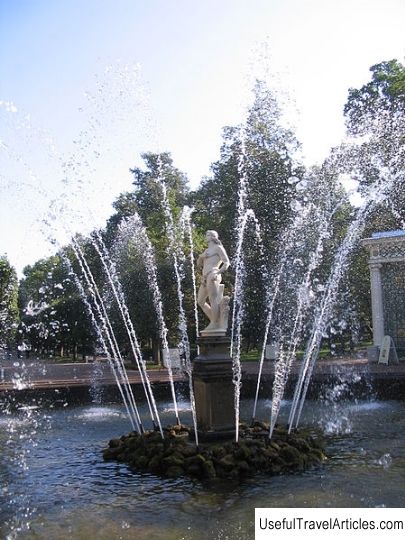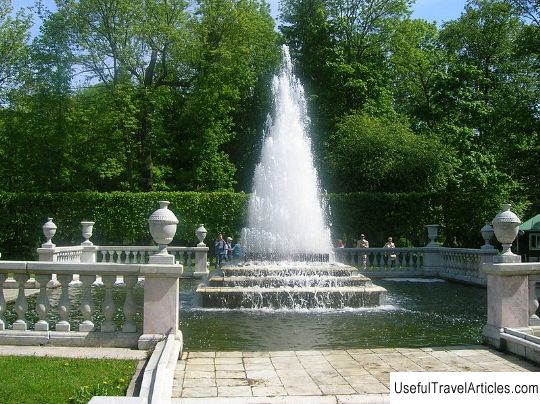Fountains-firecrackers description and photo - Russia - St. Petersburg: Peterhof
Rating: 7,9/10 (689 votes) 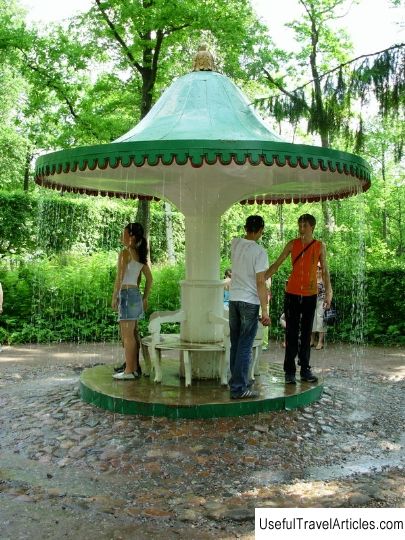
Fire fountains description and photos - Russia - St. Petersburg: Peterhof. Detailed information about the attraction. Description, photos and a map showing the nearest significant objects. Photo and descriptionThe "Dubok" and "Umbrella" fountains are hidden in curtains that adjoin the intersection of Monplaisirskaya and Marlinskaya alleys, south of the monument to Peter. Despite the fact that the Lower Park is distinguished by the symmetry of the arrangement of fountain structures, there are more fountains in its eastern part than in the western one. This is due to the fact that in the 18th century. it was here that the festivities of the royal guests took place, there was also a swimming pool and "play places" here. Fire fountains are the most interesting sights of the Lower Park. Their history comes from the water fun of Peter I: "Divans" of the Monplaisir Garden, "Waterway Bridge" of the Ruin Cascade, "Spray Table" of the Grand Cascade grotto and other "play" places. Water fun was widespread in the 18th century. in Western Europe in the parks of the feudal nobility and were distinguished by a wide variety. The Hermitage has a tapestry made in Brussels in the workshop of Jacob van der Borcht, which depicts one of the scenes at the fountain-cracker. Such structures in Peterhof appeared as a tribute to the European fashion of that time. The amusing effect of such fountains lies in the unexpected appearance of water jets that spray visitors from all sides. The "Umbrella" fountain was built in 1796 by architect. F. Brower. A bench is made around the massive base, and above it is a wide umbrella, which is crowned with an elegant carved pineapple cone. The edges of the umbrella are decorated with bright scallops painted in different colors. Festoons cover 164 tubes, the holes of which are directed towards the ground. A visitor to the park enters under an umbrella and sits on a bench, at which time the fountain suddenly turns on. Jets of water noisily burst out of the tubes, and the person is trapped in a water cage. Throughout the 19th century. "Umbrella" has been altered more than once, which led to the distortion of its original appearance. Its upper part looks like a mushroom cap (hence the second name of the fountain - "Fungus"). In addition, the number of "force" tubes was changed. In 1826 there were 134 tubes, and in 1868 already 80 tubes formed a sudden curtain of water around the bench. During the war, the fountain, like all other structures in the park, was destroyed. Only fragments of a wooden rim, a part of the warped roof and several damaged tubes remained from the fountain. The fountain was restored according to the drawings of the 18th century. and put into operation on September 11, 1949. In 1954, oak festoons and a cone crowning the fountain were made by the master carver G. Simonov. Opposite the intricate "Umbrella", on the other side of the Monplaisir Alley, on a small round platform, there is a whole complex of fountain-cracking fountains: two benches-cracker, a tree “oak” and five metal tulips. This fountain complex is called "Dubok". The six-meter high tubular tree trunk is finished with lead on the outside to resemble oak bark. Oak leaves made of red copper are attached to the tubular branches. Five tulips are placed under a stylized oak tree. The branches, trunk, leaves of the tree, as well as the stems of tulips are green. When the fountain turns on, trickles of water burst from the branches of the tree, leaves and tulip flowers. To the east and west of the Dubok fountain, there are park wooden sofas. Behind their backs, tubes are hidden in the ground, holes directed upwards. Everyone who wants to sit on a bench or inspect the wonderful fountains from all sides is suddenly attacked by a thick curtain of jets that shoot out from behind the sofa back. The Oak Fountain was erected in 1735 after the model of the sculptor K. Rastrelli and was made of lead. He decorated one of the pools in the Upper Garden. In 1746 the fountain was dismantled by the fountain master P. Brunatiy, and the “Dubok” lay in the storeroom for a long time. The firecracker fountain was remembered only at the beginning of the 19th century, and in 1802 the "Dubok" was assembled by the master F. Strelnikov. He also made the missing parts, two benches and five tulips. The fountain was installed in the Lower Park and included in the group of playful fountains. The number of tubular branches on the oak was constantly changing: in 1826 there were 349, in 1828 - 244. As a rule, the fountain was always turned off. They turned it on only when a person approached him, and then countless streams of water fell from the oak branches. Unwittingly jumping to the side, the unlucky visitor immediately fell under the influence of the sofa jets. In 1914, the Dubok fountain was again dismantled and placed in the storeroom. In 1924, the fountain was re-installed by the architect V. Voloshinov.     We also recommend reading Fountain Manneken Pis description and photos - Belgium: Brussels Topic: Fountains-firecrackers description and photo - Russia - St. Petersburg: Peterhof. |
